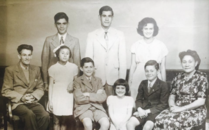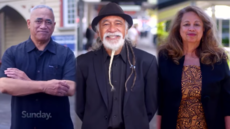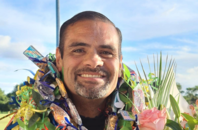The Treaty of Waitangi and vā between Maori and Pacific peoples in Aotearoa, New Zealand
Cover image photo credit: Miranda Playfair
My name is Lupematasila Misatauveve Dr Melani Anae, QSO and I am an Associate Professor in Pacific Studies, at the University of Auckland.
I have been a former Director of the Centre for Pacific Studies, a recipient of the Fulbright New Zealand Senior Scholar Award, a Companion to the Queen’s Service Order for services to Pacific communities in New Zealand in 2008 and a Marsden Award recipient in 2014.
As a Pacific Scholar my focus lies in social justice and activism, especially in the context of current global challenges such as the Covid-19 pandemic, climate change, and the calls for actions against rampant racism. My teaching and research lies in three interconnected strands – Pacific activism/social justice; Pacific empowerment/leadership and ethnic identity work; and a Liberating education/teu le va (relational ethics).

I also effectively translate these to benefit the people and communities most affected, and to address current systemic shortfalls. I’m part of a large extended Samoan aiga - I hail from the villages of Falelatai, Apia, Lalovaea and Siumu, and I’m a grandmother of two and mother of three children.
It is urgent and timely that we reflect on the Treaty of Waitangi as a turning/reference point in our consciousness about the va/relationship between Māori/tangata whenua and Pacific peoples/tangata Pasifika. What is needed is a philosophical basis for reconceptualising the spaces/va where Māori and Pacific people meet, work, play, marry, and have been thrown together, in order to reach a new level of understanding and a way forward in Māori-Pacific va in Aotearoa.
Certainly, from the perspectives of my parents’ generation who migrated to New Zealand in late 1940s, and recent arrivals, there is no real understanding or working knowledge of the Treaty or what it involves. This lies in the main with the first generation NZ-born Pacific Islanders in the 1950s, and ensuing NZ-born generations (today, almost 70% of New Zealand’s Pacific population) whose experiences and growing knowledge of life in New Zealand, is extending our understanding of the Treaty.

It is time to shift our focus away from the technical understanding of the treaty: that it is an ancient written and signed document with three articles; how today its interpretation highly contentious; how the Courts have to interpret what the Parliament has enacted; and how the issue is therefore between the Māori and the Crown only.
The technical focus of the Treaty of Waitangi for Pacific peoples and other minority groups, precludes their involvement in the Treaty debate and fuels confusion, distancing, misunderstanding and uninformed judgements about historical processes of Māori colonisation, and failed annihilation by colonisers. And subsequently negates a true appreciation of Māori sovereignty struggles and efforts by the Waitangi tribunal to address some of these historical injustices which began even before the Treaty was signed in 1840.

In these troubling and troublesome times, what is now needed is a reflection of the Treaty of Waitangi as a philosophical basis for reconceptualising the purpose of the Treaty as a peaceful means of living together and as a symbol of optimal outcomes for Maori and the Crown for the benefit of all New Zealanders.
Until Maori and Pacific history is formally taught in Schools we can only learn from our experiences. There are so many historical examples of Maori/Pacific va where we have stood side by side in solidarity with each other, not only on factory floors but also in highly political and philosophical contexts.

The following examples consist of my own historical and political consciousness of intersecting personal, political, academic and professional va:
The political activist group the Polynesian Panther Party founded in 1971 worked alongside Ngā Tamatoa a Māori activist group that operated throughout the 1970s to promote Māori rights, fight racial discrimination, and confront injustices perpetrated by the New Zealand Government, particularly violations of the Treaty of Waitangi: 1972 – establishing Te Reo as an official language of
Aotearoa; 1975 the Māori Land March; 1977-1978 Bastion Point protest; 2020 – the Ihumatao land dispute.


Few people realise that it was the work of the Māori (and Island) Affairs Department, certainly during my time of employment there as an Officer in the Housing section 1975-1990, which provided existing and new housing loans to both Māori and Pacific peoples and who also trained young Māori and Pacific apprentices to build new houses under their Trade Training Scheme.
This was a period where existing houses could be purchased, or new houses built through housing loans which could be secured with a deposit which involved capitalising of the then Family Benefit payments. This was probably the period in New Zealand’s history where the largest number of Māori and Pacific peoples became house-owners rather than renters.

Still, there is a sense in which the Treaty of Waitangi has formally very little to do with Pacific peoples, and yes, it is probably true that most Pacific people in New Zealand do not take an interest in it –fuelling the belief that in essence it involves Māori and the Crown only.
However, I contend that a turning point in our understanding of the va with Māori is looming large.
In 2022, for the first time in New Zealand’s history, the teaching of New Zealand history will become compulsory in Secondary Schools. Finally, the teaching and learning about Māori and Pacific commonalities of history, culture, oral traditions of origins, shared histories of colonialism, Christianity and capitalism, and the fight for sovereignty will re-emerge in the philosophical and political consciousness of a new generation of Pacific youth. Soifua.




